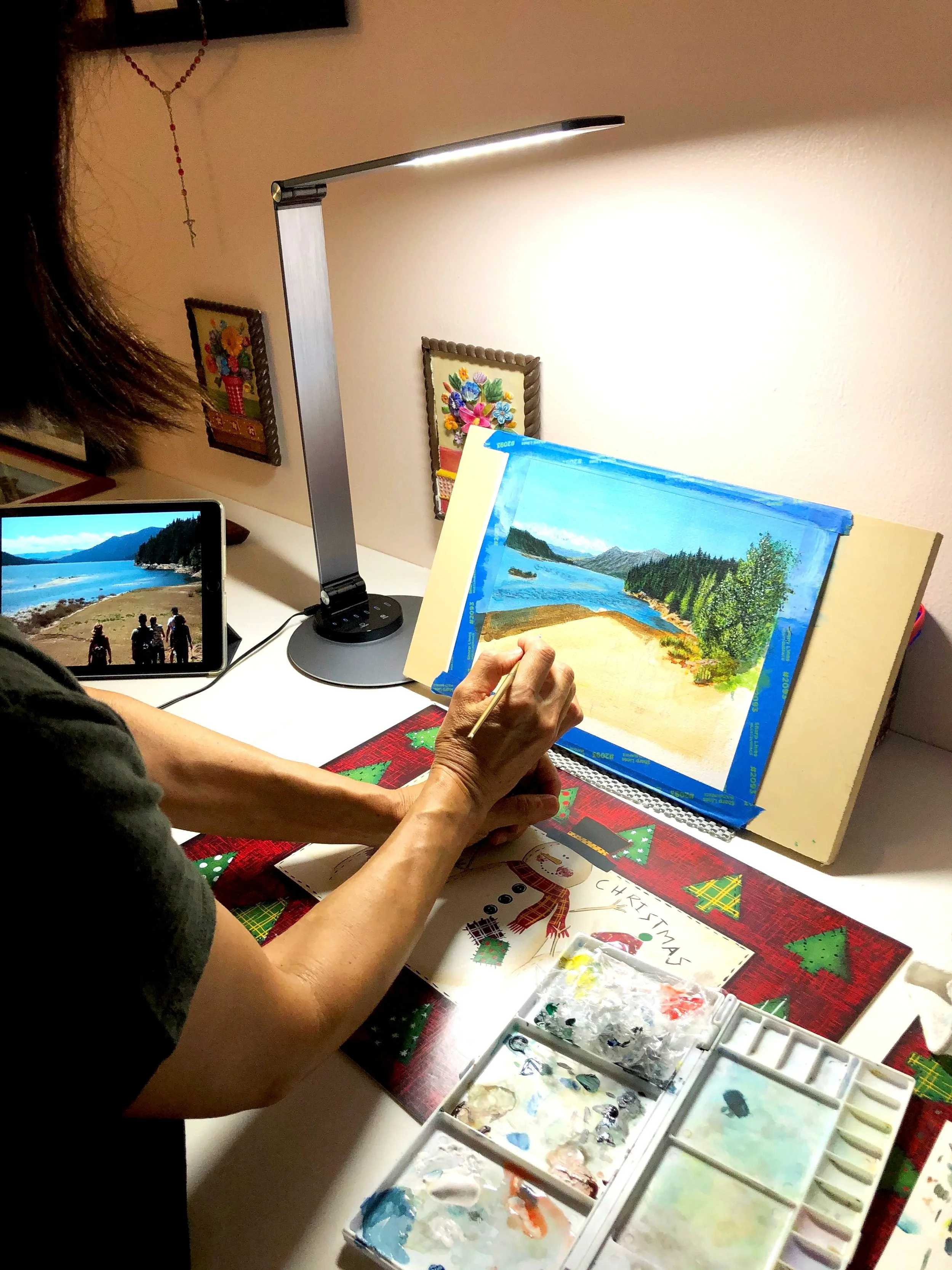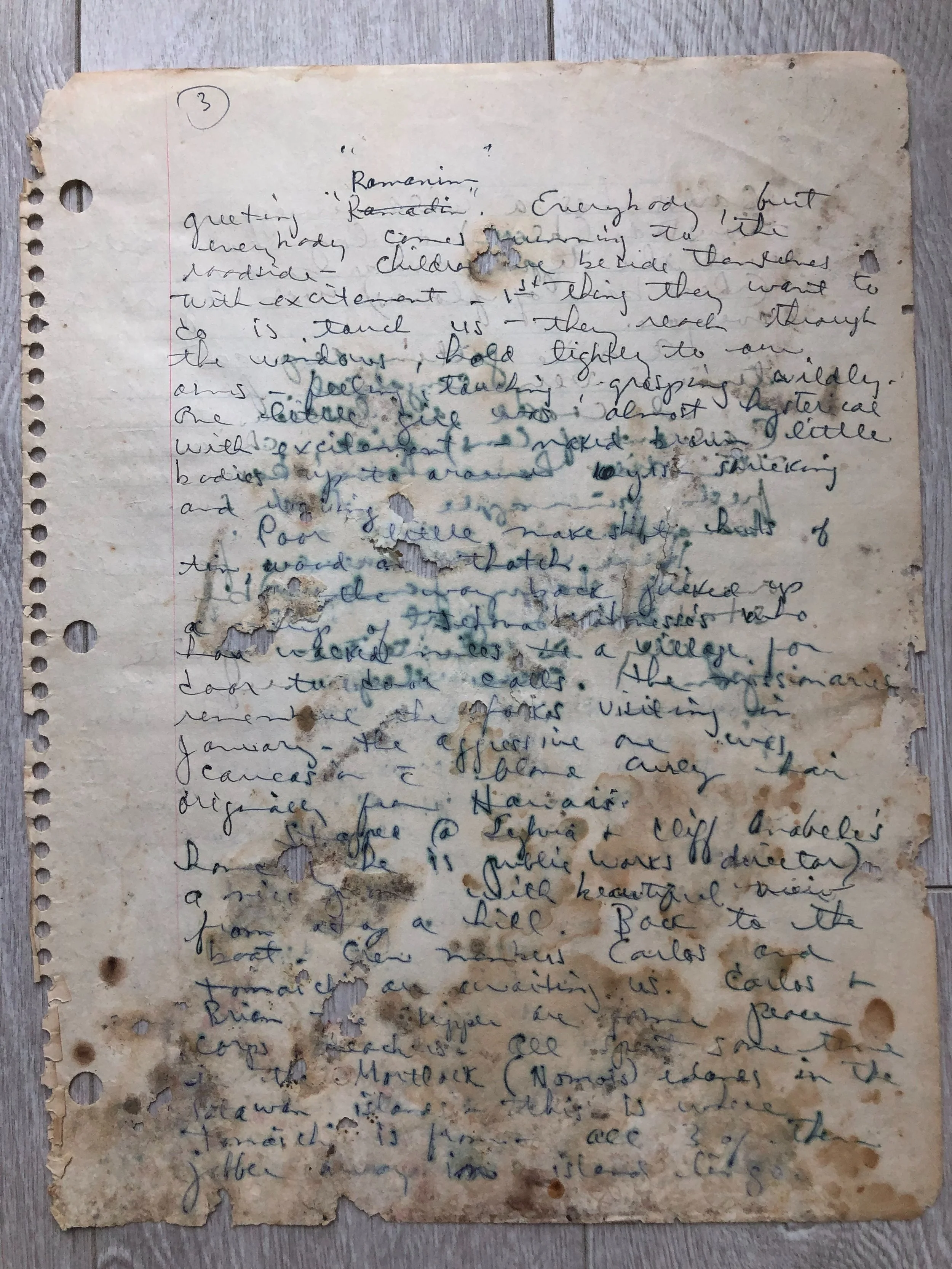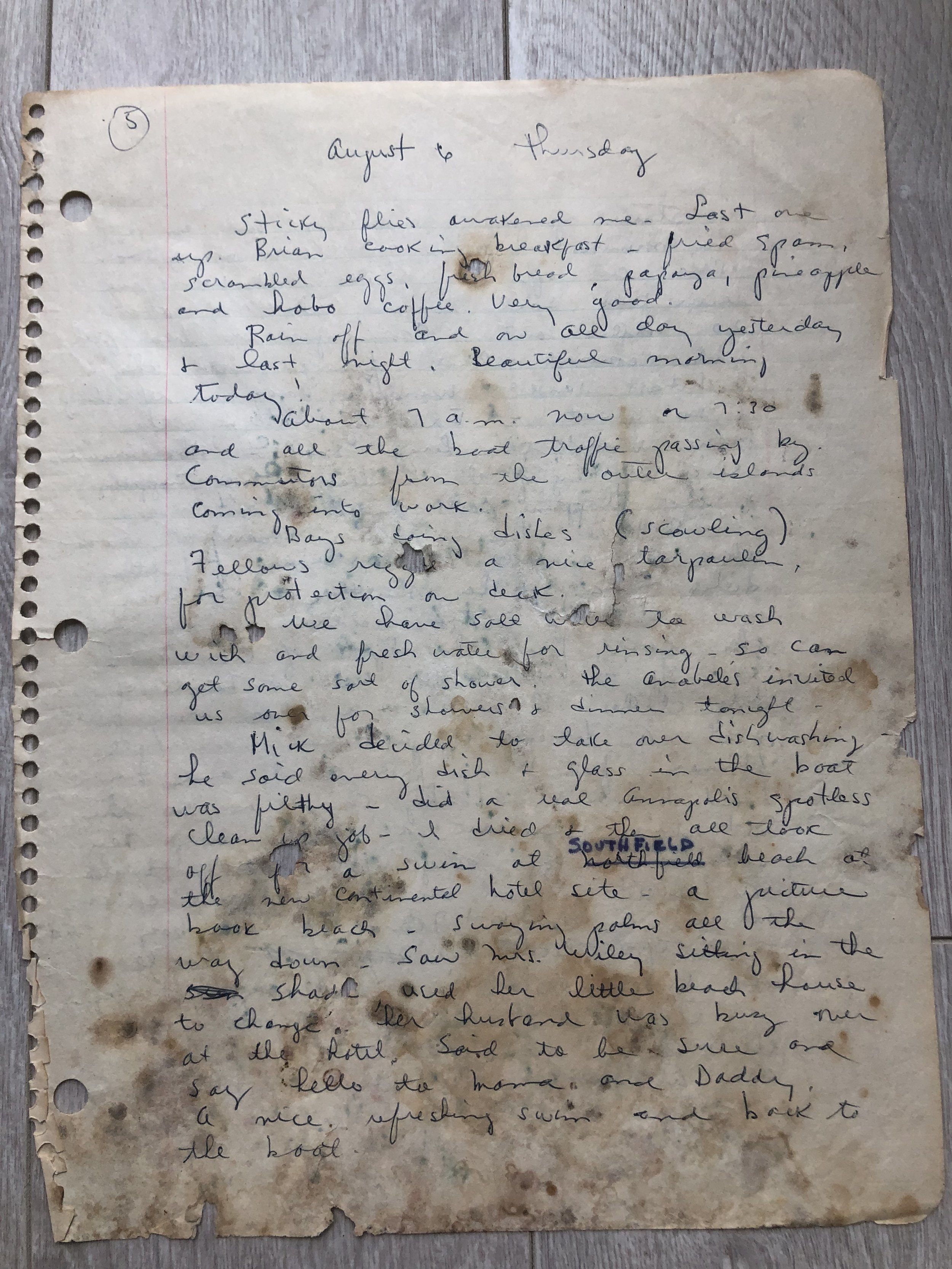Editing
There is no order when I edit my drafts. Sifting through 321 pages is a slog. My approach is to write scenes in pieces and then go back later to edit because there is always something to fix.
How do you edit? Do you jump around? Or do you stay on one scene until it’s finished?
Some days, I open my document and attack the same scene. Other days, I scroll down to a random section. When I feel adventurous, I work on the sailing scenes. When I feel emotional, I work on feeling scenes. When I’m feeling historical, I look at old PDN news clippings or copies from the Micronesian Area Research Center (MARC) resources, etc. Each are hard in their own way. This project has grown so much that I always have to go back and trim.
When editing, I think about my Mama. During COVID, she started painting with acrylics. She spends weeks/months on a single painting (see right). If the color is a little off, she blots out sections with a base coat and starts again. She adds shadows, layers, and movement all with meticulous brushstrokes sort of like when I edit scenes in my book. As you can see in her latest painting below, she’s the better artist.
In the beginning, I was obsessed with word count. I would tally up my words after every session and record them into NaNoWriMo. I also had a Discord group from writers in Japan where we would do writing sprints with the help of bots. Anything to trick me into writing.
I think it’s important to get as much down when ideas come and worry about editing later. But the best and deepest parts of a book only come from continuous editing. The initial burst is haphazardly placed on the page, but I think it’s through pondering and constant editing that makes a novel. I made the mistake of sending an excerpt to a professional editor early on in my process and they returned it “bleeding.” With the best intentions and I’m always appreciative of any feedback, but not something you want in the beginning stages of your work.
Fran Lebowitz is currently in her 35th year of writer’s block. She says there is only one job harder than writing: coal mining. I wouldn’t go that far, but it’s grueling. When I get writer’s block, I like to do something productive like prank my mom with loud music while she’s painting (see right).
In other news, I recently (March 4th) downloaded Grammarly, the “typing assistant” that reviews spelling, grammar, punctuation, etc. there were 999+ errors in my doc. After seeing that, I promptly closed my draft. Downloading the extension was enough work for that day.
Editing Log
3/5: Edited up to pg.80
3/6: Edited up to pg. 126
3/12: Edited up to pg. 147
3/17: Edited up to pg. 202
3/23: Edited up to pg. 210
3/25: Edited up to pg. 225
4/14: Edited up to pg. 249 and sent a section to one of my UOG Writing Workshop besties Aubriene to look over.
4/25: Edited up to pg. 272, 1 more chapter
5/3: Finished editing (for now)
Now, it’s time to make calls to ask for permission and to fill in information gaps!
Below are some of my grandma’s journal entries when they sailed Micronesia in 1970. Unlike Fran and I, grandma didn’t have writer’s block. But she clearly had trouble with fire and water during this trip…I transcribed these letters and used these 20 pages as the basis for one of the most difficult sections of the book. Difficult because it was hard to understand the logistics of their sailing trip (the order that they traveled to each island) and distances. Also difficult because I want to depict Chuuk and Pohnpei as accurately as possible.
**If anyone has connects in Kolonia, Dublon, Moen (Weno), Polle Island, Satawan or any of the Mortlock Islands please let me know (kohaku09[at]gmail.com) or in the comments below! SYM



